We continue publishing our customer comments about their holidays along the Trans-Siberian railway.
At 11am we went to Ust Orda, a Buryat village about 70km north from Irkutsk. The Buryat people are the largest indigenous group in Siberia and the purpose of this particular visit was to meet a local shaman. I was very excited about this, however also a bit anxious because I didn’t know what to expect and what to ask.
We first visited the Buryat museum, which portrays the history and lifestyle of the nation, highlighting their traditions, clothing and other artefacts. It is set in a wooden building which used to be a village school.
The shaman, Alexei, greeted us in the hall where he had some things prepared for the ceremony. The smell of incense wafted freely. First, he showed me how Buryats greet each other holding each other by the elbows and hugging three times.
Once we sat down he talked about his community background, explaining how they’d first come from Mongolia and worshipped blue skies and nature. He explained how they did not farm in order not to hurt the earth and only took from nature as much as they needed. Some rituals required animal sacrifice for the ‘Burhans’, or gods. He also asked about my family and heritage. He wanted to know if I knew my ancestors and if I could go back seven generations. This is relevant as in Buryat culture, if people want to get married, it is made sure that families of the bride and groom are not related. Although the man is considered the hunter, traditionally it is the woman who is the head of the family and she decides the future of the children.
Alexei also compared different religious practices, prayer and places of worship and explained the shamanistic one – the blue sky. He asked why I was travelling alone and said that it is always better to travel with a companion. After that, he performed a ceremony for the traveller so my way would be clear and so I would reach my destination safely. I was dressed in a traditional dress and hat, blue dress for men representing the sky and freedom and purple for women meaning submission. The ritual was emotional and I felt really good after it.
Once it was over Alexei showed us around the museum and the outdoor space where they perform the same rituals in summer. The village itself is quite small with mostly wooden houses.
After the ceremony we went to have a Buryat lunch at the Metelitsa restaurant outside the village, in the middle of the steppe.
The set menu consisted of squid salad, beef and noodle soup, pozy (mincemeat steamed dumplings), salamat (fried sour cream with flour) eaten with bread or potato and pancakes with tea for dessert. Vodka was also on the table. The food was tasty, but had a bit too much fat for my taste.
On the way back to town, we visited the Marriott hotel located across the street from the Angara hotel. The hotel is new, looks very clean and rooms are quite spacious.
The following morning, we drove to Taltsy–an ethnographic wooden architecture museum. It is on the way to Listviankaand is on the Angara river bank. Wooden houses have been brought to the museum from all over the region and these highlight the differences between Cossack households, Buryat households andOld Believers households as well asvarious institutions like schools, mayor’s office, blacksmith’s workshop, ceramic workshops and others. In the middle of the museum there is an ‘ostrog’ (the local term for Kremlin). Currently some parts of the museum are still under construction. There is also a café which is a good spot for lunch.
A little later on we went to Listvianka to see the village and Lake Baikal. First we had lunch at Proshlyivek, a restaurant vividly decorated with soviet memorabilia. The food was tasty – we were served salads, salt omul with bread and butter, borsht, omulshashlyk and ice cream for dessert. By the time we finished lunch the weather had changed and the lake dipped in and out of view shrouded by clouds and snow. We went to the chair lift in an attempt to reachChersky peak, but alas it was too cold to go up. Afterwards, we stopped by the soviet Hotel Baikal on the hill, which lacked direct access to the lake.
Down in the village – which spreads along the shore for about 6km – we drove to the end and visited hotel Maiak, the only four-star hotel in the village. Conveniently located, it is a striking place with kitsch, retro design. The rooms are adequate but the décor lacked a certain style.
The other notable hotel is Krestovaya Pad which consists of several detached blocks of different sized guestrooms, most of them wooden. The design is modern and minimalist and the bathrooms are smart and clean. There is a restaurant and café on the premises. The only downside is that there are no lifts to the second and third floors and some of the cottages have many outside stairs.
We then visited one of the wooden lodges – ‘9 val’. There are only six en-suite rooms with transformer (twin / double) beds. All rooms face the lake side and are traditionally wooden. The downside to such a great setting is the design, which could do with freshening up. The restaurant has been artfully hand painted and has a mirror globe. There is also a sauna and a nice terrace outside. Security is taken seriously here and the gate is locked at all times.
The other lodge I visited was Nikolay. This is a beautiful spacious house with big rooms, wooden décor, the highlight of which are the unique wooden sculptures that have been dotted about. The house is spotlessly clean and there are 11 rooms available. There is also a banya with an outdoors diving pool and a terrace.
The village has a market with souvenirs and fish, a marina to take ferries and cruises, but the absolute highlight is the Baikal museum.
Baikal museum is a must-visit inListvianka. Spread over several rooms, the first one is about the evolution of the planet, the second about the formation of Lake Baikal, complete with a very good model of the lake bed and its depths.
The next room is about the general flora and fauna of the region. There are even fish tanks with fresh water pumped in from the lake to keep the fish in their natural habitat. The final exhibit is a nerpa seal in a pool, who certainly stole the show! She was very playful and fun to watch. In the museum, there is also a room which has been designed as a submarine. The dive downwards lasts for 15minutes and goes all the way to the deepest point showing the life in the lake at various depths.
It was dark by the time we returned to Irkutsk and we went for a farewell dinner. I ate ‘sagudai’ – pieces of frozen fish with herbs and lots if onion – a local delicacy and very tasty indeed.
Returning by Train
After a small mishap with train tickets, we set off to the station after dinner.We boarded train number 362 which had typical Russian carriages. On-board we found clean sheets, a calm train attendant and the toilets on-board were passable. However, the attendant made the compartment so hot that it was impossible to sleep, an unexpected problem. The upside meant that people on-board got chatting and I met a young student studying chemistry at Mendeleev University in Moscow and a man from Ulan Ude. Train travel, albeit slow at times, allows for such interesting local interactions.

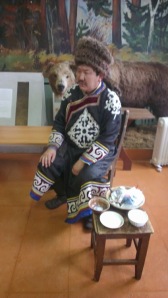
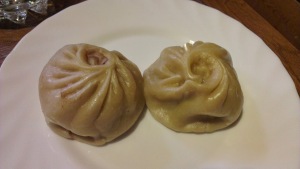
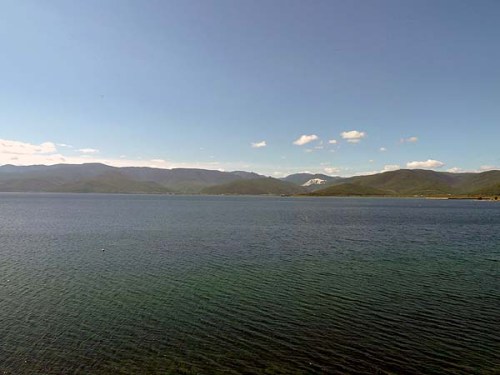
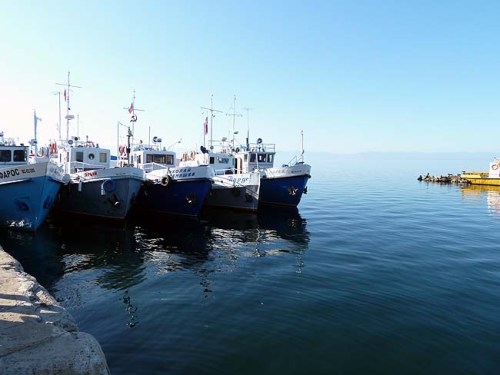
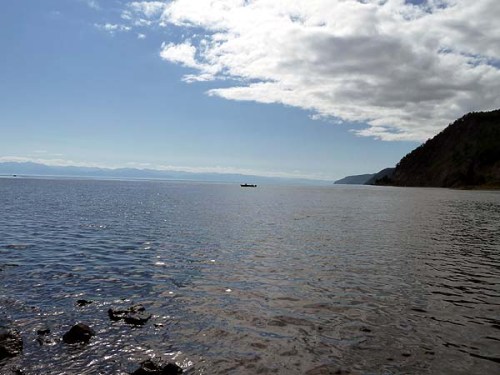
very awesome post ..i liked your post very much…Thanks for sharing it .
thanks for sharing, Russia is so diverse!